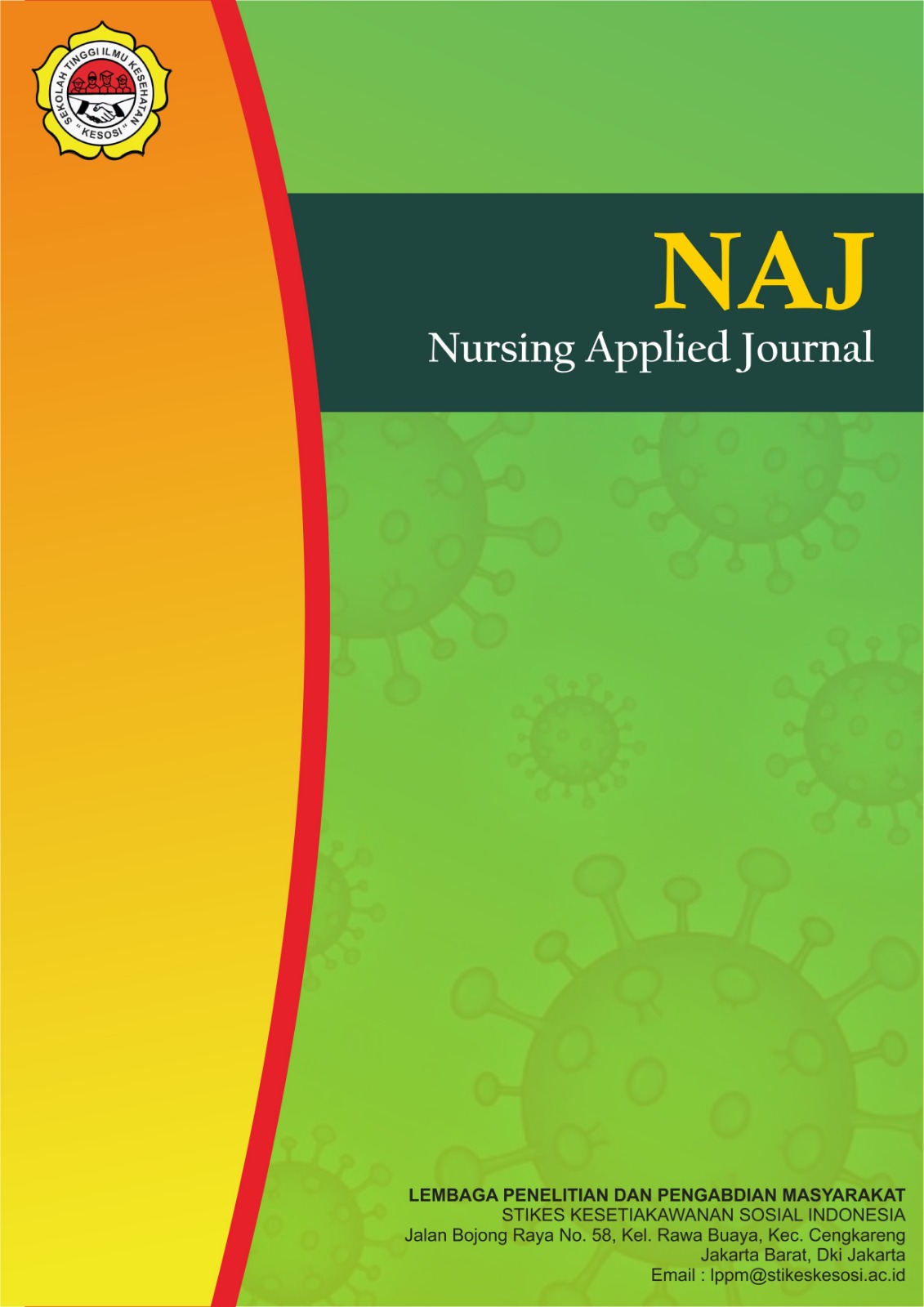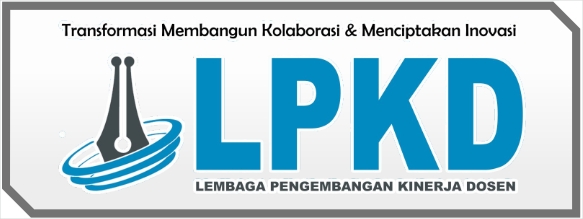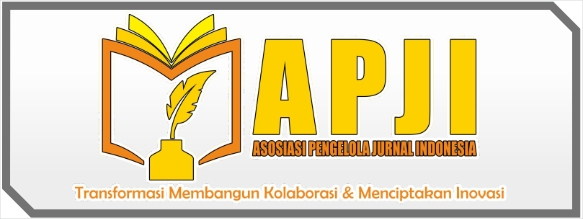Implementasi Mobilisasi Dini pada NY. M G2P2A0 dengan Gangguan Mobilitas Fisik Post Partum Sectio Caesarea di Ruang Dewi Sartika RSUD Arjawinangun Kabupaten Cirebon
DOI:
https://doi.org/10.57213/naj.v3i3.772Keywords:
Early Mobilization, Physical Mobility Disorders, Sectio CaesareaAbstract
Background: A Caesarean section (CS) is a birthing procedure performed by making an incision in the mother's abdominal wall and uterus to deliver the baby, usually performed when normal vaginal delivery is not possible due to medical indications for the mother or fetus, such as placenta previa, abnormal presentation or position of the fetus, and other conditions that pose a risk of medical complications that endanger the mother and fetus. At Arjawinangun Regional Hospital, 1,491 CS births were recorded in 2021. One of the problems that often occurs in post-Cesarean section patients is impaired physical mobility, which causes limitations in the ability to move independently. This disorder needs to be addressed immediately so as not to hinder the recovery process. To overcome this problem, early mobilization intervention is very important. Early mobilization is a way to help patients increase their physical activity after undergoing surgery. Objective: This study aims to determine the description of the implementation of early mobilization in Mrs. M with impaired physical mobility after Caesarean section in the Dewi Sartika room, Arjawinangun Regional Hospital, Cirebon Regency, and to assess its effectiveness in overcoming these impaired physical mobility. Implementation method: This study used a case study method with research subjects in the form of patients who experienced impaired physical mobility after Sectio Caesarea at RSUD Arjawinangun Cirebon Regency. The implementation process involved providing early mobilization instructions which included light movement exercises tailored to the patient's condition. Results: The results of the study showed that after the implementation of early mobilization, impaired physical mobility in patients after Sectio Caesarea could be resolved significantly. Patients showed increased ability to move, reduced pain, and accelerated the post-operative recovery process.
References
Hutabarat, V., Anastasia, S., Jeniawaty, S., Argaheni Bayu, N., & Khasanah, U. (2022). Buku ajar nifas S1 kebidanan (Jilid III). Maha Citra Utama. https://books.google.co.id/books?id=zJSsEAAAQBAJ
Ilmawati, F. (2024). SOP mobilisasi dini post operasi. https://perpusutama.poltekkesmalang.ac.id/assets/file/kti/P17212235030/21._Lampiran_.pdf
Jaya, H., Amin, M., Putro, S. A., & Zannati, Z. (2023). Mobilisasi dini pasien post sectio caesarea dengan masalah gangguan mobilitas fisik. JKM: Jurnal Keperawatan Merdeka, 3(1), 21–27. https://doi.org/10.36086/jkm.v3i1.1563
Kementerian Kesehatan Republik Indonesia (Kemenkes RI). (2023). Survei Kesehatan Indonesia (SKI) 2023. https://www.kemenkes.go.id
Kementerian Kesehatan Republik Indonesia. (2023). Survei Kesehatan Indonesia (SKI). Kementerian Kesehatan RI.
Medrec RSUD Arjawinangun. (2021). Data Rekam Medis Persalinan di RSUD Arjawinangun 2021. RSUD Arjawinangun, Kabupaten Cirebon.
Mutmainnah, A. U., Johan, H., & Llyod, S. S. (2021). Asuhan persalinan normal dan bayi baru lahir. Penerbit Andi.
Sabella, A. S., Asiri, A. A., & Al-Dhwayan, M. A. (2021). Physical mobility challenges after cesarean section: A systematic review of the literature. Journal of Perioperative Nursing, 34(3), 50-57. https://doi.org/10.1177/1085032221997024
Sabella, D., Wulandari, T. S., Keperawatan, A., Temanggung, A., Tengah, J., & Fisik, G. M. (2019). The effectiveness of mobilization support measures in improving physical mobility in post. [Nama jurnal tidak tersedia], 3, [halaman tidak tersedia].
Solekhudin, A. I., Ma’rifah, A. R., & Utami, T. (2022). Asuhan keperawatan gangguan mobilitas fisik pada pasien post sectio caesarea. Journal of Management Nursing, 2(1), 177–183. https://doi.org/10.53801/jmn.v2i1.79
Tim Pokja SIKI DPP PPNI. (2018). Standar intervensi keperawatan Indonesia (Edisi 1). DPP PPNI.
Tim Pokja SLKI DPP PPNI. (2022). Standar luaran keperawatan Indonesia (Edisi 1). DPP PPNI.
Widhawati, H., Darmawan, D., & Sari, D. P. (2024). Mobilisasi dini pasca operasi caesarea: Intervensi penting dalam pemulihan fisik. Jurnal Kesehatan Masyarakat, 12(1), 121-128. https://doi.org/10.28932/jkm.v12i1.1084
Widhawati, R., Lubis, V. H., & Komalasari, O. (2024). Jurnal peduli masyarakat. Jurnal Pengabdian Kepada Masyarakat (JPKM) - Aphelion, 4, 171–178.
World Health Organization (WHO). (2021). Global epidemiology of caesarean section: A rising trend. https://www.who.int/news-room/fact-sheets/detail/caesarean-sections
World Health Organization. (2021). Cesarean section rates continue to rise, amid growing inequalities in access. https://www.who.int/news/item/16-06-2021-caesarean-section-rates-continue-to-rise-amid-growing-inequalities-in-access
Yulianingsih, N. (2024). Asuhan keperawatan maternitas. CV Trans Info Media.
Downloads
Published
Issue
Section
License
Copyright (c) 2025 NAJ : Nursing Applied Journal

This work is licensed under a Creative Commons Attribution-ShareAlike 4.0 International License.













